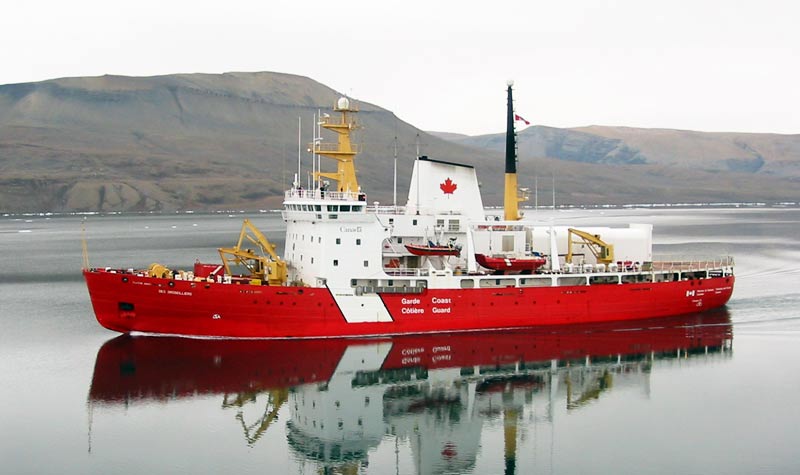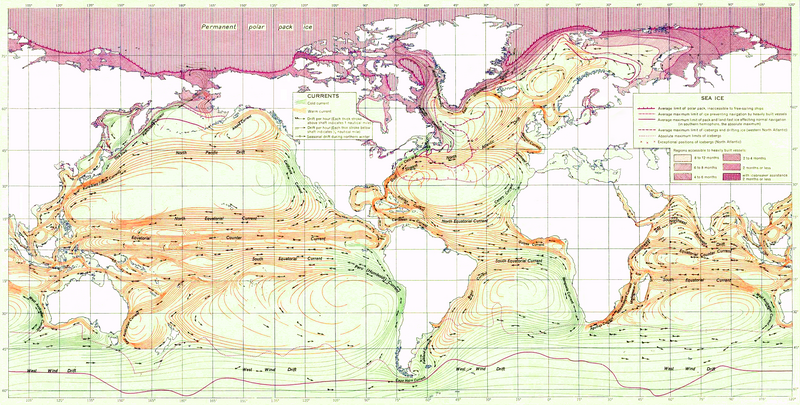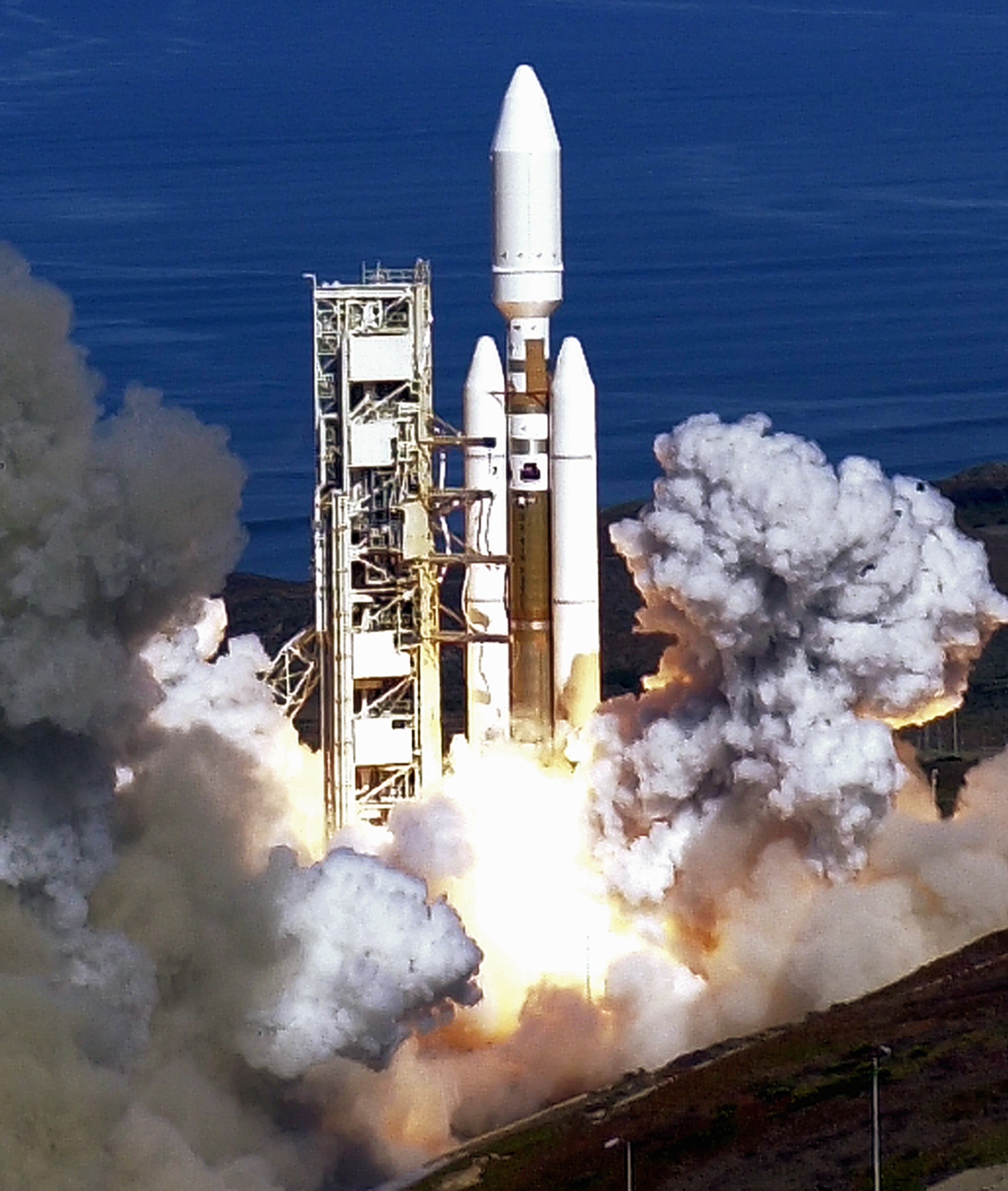NAVAL and MERCHANT MARINE INTEREST:
THE DEFINITION OF "INNOCENT PASSAGE" IS CHANGING FOR OCEANOGRAPHIC RESEARCH VESSELS:It's Midnight, Do You Know Where Your Next EEZ Is?
 |
| NOAA SHIP RESEARCHER, OFFICIAL NOAA PHOTOGRAPH |
When my life began in 1948, the final year for all steel models, my ship master uncle's main political navigation concern was entry into a foreign nation's "territorial sea". By the time my seagoing career started in the mid 1960s there was already a growing list of considerations for maintaining "innocent passage" in an expanding zone of ocean in which adjacent coastal states claimed special rights. The world had discovered oil on the outer continental shelves (OCS) and had codified special rights over the OCS for adjacent coastal states. The latest expansion on that concept is the Exclusive Economic Zone (EEZ). The international consensus on the EEZ is that it is not dependent on the geophysical definitions associated with the OCS Convention. Some legal authorities had hoped that the EEZ concept would put a 200 mile cap on the outward expansion of adjacent coastal state's exclusive economic rights to bottom resources. But the Russians and the Chinese, just to name two powers, are busy using the EEZ concept in conjunction with the OCS geophysical concepts to claim far more than 200 miles at the expense of neighboring adjacent coastal states. For years, of all of the somewhat qualified rights of innocent passage through these expanding offshore zones of evolving particular adjacent coastal state's rights; oceanographic research was perhaps the least controversial of the internationally recognized rights of "innocent passage". This once happy state of affairs is no longer the case.
If you are doing voyage planning for an oceanographic research ship today you have to keep in mind that what may well be "academic oceanographic research " to you, may well be considered "economic research" to certain claimants of EEZ rights, real or simply claimed. While probably no one would object to your use of a standard fathometer in an EEZ today a towed seismic array would probably be an open invitation to a boarding by naval, customs, coast guard, or natural resources authorities of the claiming state. If your ship has any other sensors that you normally operate on the high seas or other more specific authorized research areas you may be well advised to turn these off, tag the controls and log the time and position of the ship when the sensors were secured in order to avoid trouble.Unless your mission is to contest someone else's claim you probably don't want to risk trouble in a disputed zone. When in doubt we suggest that you turn off the non navigational electronics.
Here is the problem for practical voyage planning and navigation. How does your bridge team know when they are about to enter an EEZ or contested or claimed EEZ?
We searched books in print and several chart and map providers and could find little of use as a practical chart table reference. Moreover the situation with EEZs is in constant flux. So we suggest that the voyage planning team make up their own chart room reference during the voyage planning stage from the latest data. Fortunately, through the astute voyage planning work of a young NOAA Corps Officer we have become aware of an excellent source of electronic information that can serve the purpose of a voyage planning team.
Those of you under 30 will immediately recognize this resource and those of you like me who are two days older than water and one day older than dirt will be amazed. Go to "Google Earth http://geoboundaries.wordpress.com/2008/07/31/viewing-the-worlds-eez-in-google-earch/At Google Earth you will find a down loadable graphic and geographic coordinate description of the world's EEZs. The data is easily converted by the cyber skilled into almost any electronic chart or navigational software. The source data is also available in "GIS" shape files for use in professional geo-referencing client software. This is not the only available reference on EEZ locations around the world's oceans but it is the best we have found so far after a wide and fairly skilled search so we thought that we'd share it with fellow navigators and voyage planners and this seemed like a good place to do it. We hope that if any of you have an equal or better resource that you will lets know via a comment as soon as possible. Good luck and unless you intend to challenge some adjacent coastal state's claims, don't cross into an EEZ without securing your non navigational sensors.
Editor's Note: Google's Geoboundaries link is now permanently installed in our OCEANOGRAPHY and NAVIGATION sections along with many other helpful voyage planning tools for the navigator.
ON LINE MAPS AND CHARTS STORE
2.jpg&container=blogger&gadget=a&rewriteMime=image%2F*)













 .
.

 U.S.Merchant Marine Shop
U.S.Merchant Marine Shop

 DIVER'S BOOK SHELF
DIVER'S BOOK SHELF




2.jpg&container=blogger&gadget=a&rewriteMime=image%2F*)







 .
. U.S.Merchant Marine Shop
U.S.Merchant Marine Shop DIVER'S BOOK SHELF
DIVER'S BOOK SHELF















No comments:
Post a Comment